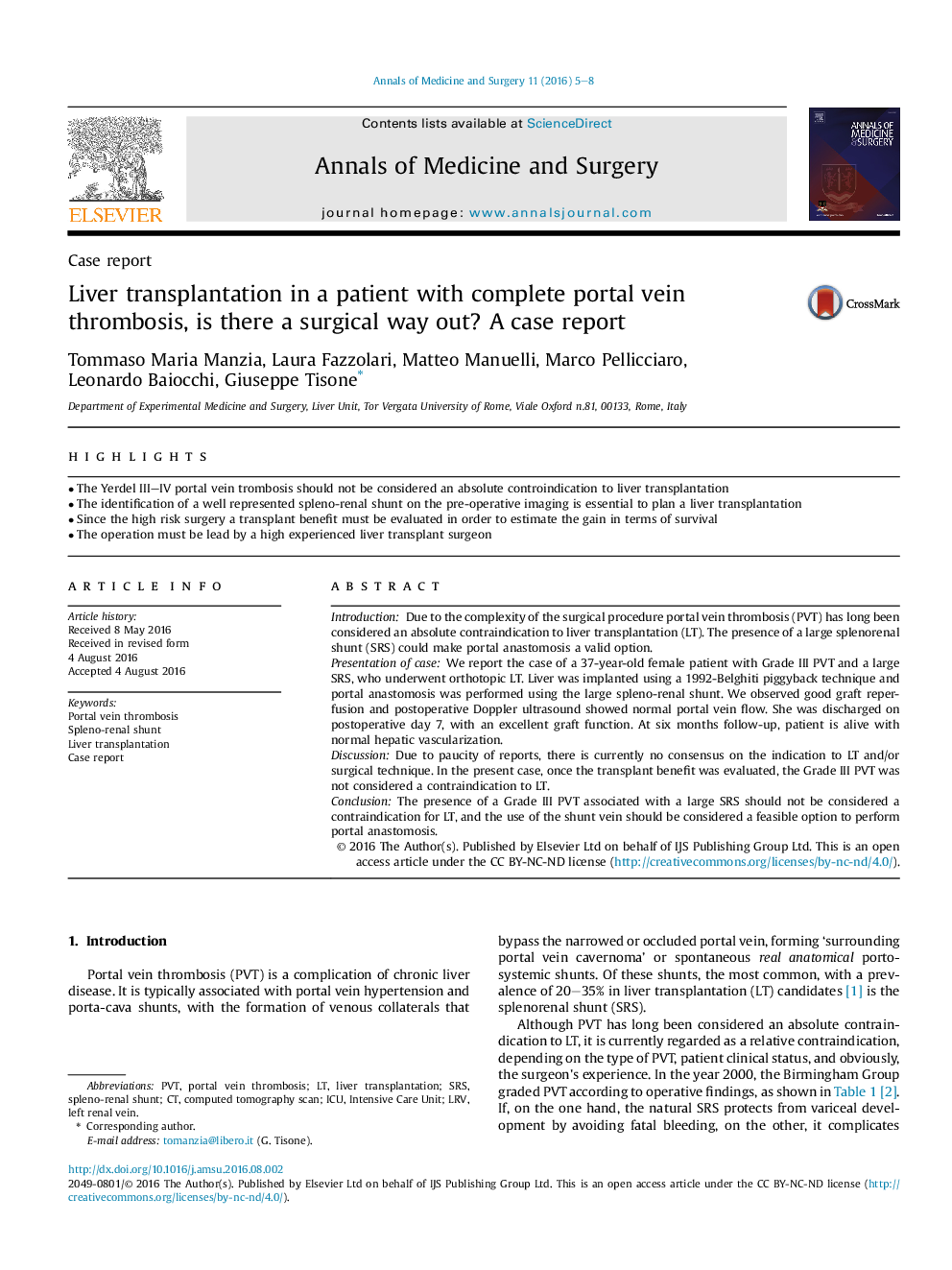| Article ID | Journal | Published Year | Pages | File Type |
|---|---|---|---|---|
| 4195109 | Annals of Medicine and Surgery | 2016 | 4 Pages |
•The Yerdel III–IV portal vein trombosis should not be considered an absolute controindication to liver transplantation•The identification of a well represented spleno-renal shunt on the pre-operative imaging is essential to plan a liver transplantation•Since the high risk surgery a transplant benefit must be evaluated in order to estimate the gain in terms of survival•The operation must be lead by a high experienced liver transplant surgeon
IntroductionDue to the complexity of the surgical procedure portal vein thrombosis (PVT) has long been considered an absolute contraindication to liver transplantation (LT). The presence of a large splenorenal shunt (SRS) could make portal anastomosis a valid option.Presentation of caseWe report the case of a 37-year-old female patient with Grade III PVT and a large SRS, who underwent orthotopic LT. Liver was implanted using a 1992-Belghiti piggyback technique and portal anastomosis was performed using the large spleno-renal shunt. We observed good graft reperfusion and postoperative Doppler ultrasound showed normal portal vein flow. She was discharged on postoperative day 7, with an excellent graft function. At six months follow-up, patient is alive with normal hepatic vascularization.DiscussionDue to paucity of reports, there is currently no consensus on the indication to LT and/or surgical technique. In the present case, once the transplant benefit was evaluated, the Grade III PVT was not considered a contraindication to LT.ConclusionThe presence of a Grade III PVT associated with a large SRS should not be considered a contraindication for LT, and the use of the shunt vein should be considered a feasible option to perform portal anastomosis.
